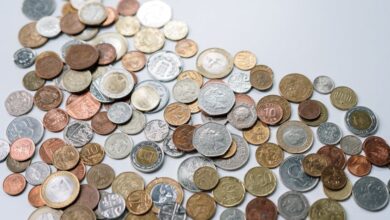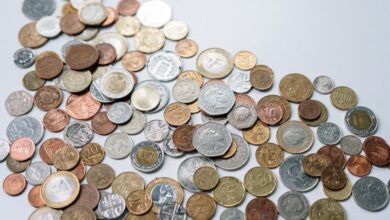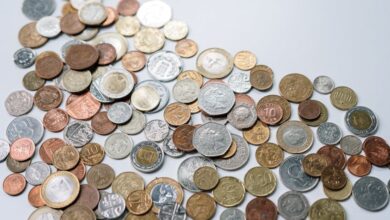Exploring Industrial Metals: Applications, Trading Insights, and Sustainable Practices for a Circular Economy

In today's rapidly evolving industrial landscape, the significance of metals extends far beyond their basic physical properties. Industrial metals such as aluminum, copper, and zinc play pivotal roles across various sectors, including construction, automotive, aerospace, and energy. These non-ferrous metals are not only crucial for manufacturing and metal fabrication but also serve as essential components in modern technologies, from battery metals powering electric vehicles to aluminum used in lightweight structures. As we delve deeper into the applications and trading of these vital commodities, we will explore the intricacies of metal mining and metallurgy, the dynamics of base metals and precious metals trading, and emerging trends shaping the market. Additionally, we will examine the growing importance of sustainable metal production and recycling practices, which are becoming integral to a circular economy. Join us as we navigate through the world of industrial metals and uncover their impact on both current industries and future innovations.
- 1. The Role of Industrial Metals in Modern Industries: Exploring Aluminum, Copper, and Zinc Applications
- 2. Understanding Metal Trading: Insights into Base Metals, Precious Metals, and Market Trends
- 3. Sustainable Metal Production and Recycling: The Future of Metal Commodities in a Circular Economy
1. The Role of Industrial Metals in Modern Industries: Exploring Aluminum, Copper, and Zinc Applications
Industrial metals play a crucial role in modern industries, serving as the backbone of various sectors, including construction, automotive, aerospace, and energy. Among the most significant of these are aluminum, copper, and zinc, each with unique properties and applications that make them indispensable in today's technological landscape.
Aluminum is a lightweight, non-ferrous metal known for its exceptional corrosion resistance and high strength-to-weight ratio. Its applications span a wide range of industries, from construction metals used in building frameworks, roofing, and window frames to aerospace metals employed in aircraft manufacturing. The automotive sector also benefits from aluminum's lightweight characteristics, which contribute to fuel efficiency and performance. As sustainability becomes increasingly important, aluminum's recyclability positions it as a leading material in sustainable metal production.
Copper, classified as a base metal, is renowned for its excellent electrical conductivity, making it essential in electrical wiring, motors, and electronic devices. In addition to its electrical applications, copper is a vital component in plumbing and roofing, further highlighting its versatility as a construction metal. The metal mining industry continuously seeks to meet the rising demand for copper, particularly as the world transitions to renewable energy sources, where copper's role in energy metals is becoming more prominent, especially in electric vehicles (EVs) and battery technologies.
Zinc, often used as a protective coating for ferrous metals to prevent corrosion, is crucial in metal fabrication processes. It is extensively used in galvanization, which enhances the durability of steel products in construction and automotive applications. Additionally, zinc-based alloys are employed in die-casting, further expanding its utility across various industries.
The importance of these industrial metals extends beyond their primary applications. Trends in metal recycling and sustainable production are shaping the future of metallurgy, as industries strive to minimize waste and reduce environmental impact. The integration of advanced technologies like 3D printing metals is also revolutionizing the way these metals are utilized, allowing for innovative designs and applications.
As we continue to explore the role of industrial metals in our economy, it becomes clear that aluminum, copper, and zinc are not just materials of choice; they are foundational elements driving progress across multiple sectors. As the demand for these metals grows, so too does the necessity for responsible sourcing, recycling, and production practices to ensure a sustainable future for industries reliant on these vital resources.
2. Understanding Metal Trading: Insights into Base Metals, Precious Metals, and Market Trends
Understanding the nuances of metal trading is crucial for investors and industries alike. The metal market is primarily divided into two categories: base metals and precious metals. Base metals include widely used industrial metals such as aluminum, copper, and zinc. These metals are essential in various sectors, including construction, automotive, and energy. For instance, aluminum is favored for its lightweight properties in the aerospace industry, while copper is indispensable for electrical wiring and plumbing due to its excellent conductivity.
On the other hand, precious metals like gold and silver are often viewed as investment assets, particularly in times of economic uncertainty. Gold investing and silver investing not only serve as a hedge against inflation but also play significant roles in jewelry production and as components in electronics. The rarity and aesthetic appeal of these metals ensure their continued demand, making them vital in the broader metal commodities market.
Market trends heavily influence the trading of both industrial and precious metals. For instance, the growing emphasis on sustainable metal production has led to increased interest in metal recycling and the use of recycled materials in metallurgy. This trend aligns with global efforts to reduce waste and promote environmentally friendly practices. Additionally, the rise of technologies such as 3D printing has created new opportunities for metal fabrication, allowing manufacturers to produce complex components with reduced material waste.
Furthermore, the demand for energy metals, such as lithium and cobalt, is surging due to the rapid expansion of the battery market, particularly in electric vehicles. These battery metals are becoming increasingly important as the automotive industry shifts towards sustainable energy solutions.
Ferrous metals, like steel, remain a cornerstone of construction and infrastructure. Their strength and durability make them indispensable for building and manufacturing processes. In contrast, non-ferrous metals, which include aluminum and copper, are prized for their corrosion resistance and lightweight characteristics, making them ideal for a range of applications from aerospace to consumer electronics.
Overall, the interplay between industrial metals, precious metals, and emerging market trends shapes the landscape of metal trading. Investors should keep informed about these dynamics, as changes in supply and demand can directly impact metal prices and investment opportunities. Understanding these factors is key to navigating the complexities of the metal market and making informed decisions in metal trading.
3. Sustainable Metal Production and Recycling: The Future of Metal Commodities in a Circular Economy
As the world shifts towards more sustainable practices, the production and recycling of metals play a pivotal role in the circular economy. Sustainable metal production emphasizes reducing environmental impact while meeting the growing demand for industrial metals, including aluminum, copper, and zinc. The push for eco-friendly practices is reshaping metal mining and metallurgy, promoting the efficient use of resources and minimizing waste.
Metal recycling is at the forefront of this transition. By reclaiming and reusing metals, industries can significantly reduce the need for new metal extraction, which often results in substantial environmental degradation. For instance, recycling aluminum saves up to 95% of the energy required for primary production, making it a vital component in sustainable practices. Similarly, recycling copper not only conserves resources but also reduces metal corrosion, extending the lifespan of metal products.
The future of metal commodities rests on innovative approaches to metal fabrication and production. Advances in technology, such as 3D printing metals, are revolutionizing the way we utilize metal alloys, enabling the creation of complex structures with reduced material waste. Industries such as aerospace and automotive are increasingly adopting these methods, highlighting the importance of sustainable practices in sectors that heavily rely on construction metals and energy metals.
Moreover, the recycling of rare earth metals and battery metals is becoming increasingly critical. With the rise of electric vehicles and renewable energy technologies, the demand for these metals is skyrocketing. By developing efficient recycling processes, we can ensure a steady supply of crucial materials, such as lithium and platinum, while diminishing the environmental impact associated with metal mining.
In conclusion, the integration of sustainable metal production and recycling into the metal industry not only addresses environmental concerns but also supports economic growth. As the demand for precious metals and industrial metals continues to rise, embracing a circular economy will be essential for securing a sustainable future. This shift will not only benefit the environment but also create new opportunities for innovation and investment, particularly in the areas of gold investing and silver investing, as these metals remain integral to various applications, from jewelry to electronics. By prioritizing sustainability, the metal industry can lead the way toward a more responsible and resource-efficient future.
In conclusion, the significance of industrial metals like aluminum, copper, and zinc cannot be overstated in today's rapidly evolving industries. From construction metals that form the backbone of infrastructure to aerospace metals that drive innovation in flight technology, these materials play a pivotal role across various sectors. Understanding the intricacies of metal trading, including the dynamics of base metals and precious metals, allows investors and industry stakeholders to navigate market trends effectively.
Moreover, as we move towards a more sustainable future, the importance of sustainable metal production and recycling becomes increasingly clear. Embracing metal recycling not only conserves resources but also supports the circular economy, which is essential in managing our planet's finite resources. As the demand for battery metals like lithium and rare earth metals rises, the need for responsible metal mining practices and effective metal fabrication techniques will be crucial.
Looking ahead, the intersection of metallurgy and technology—such as 3D printing metals—will undoubtedly shape the future of industrial applications. Whether it's through innovative metal alloys or advancements in energy metals for renewable technologies, the landscape of metal commodities is ever-changing. By staying informed about metal trends and investing wisely in this dynamic market, stakeholders can ensure they are well-positioned to meet the demands of the future while contributing to a more sustainable approach to metal usage.
As we continue to explore and harness the potential of industrial metals, it is essential to recognize their critical role in not just our economies, but also in fostering a sustainable and resilient global community.
References:
(Include your list of sources here)





